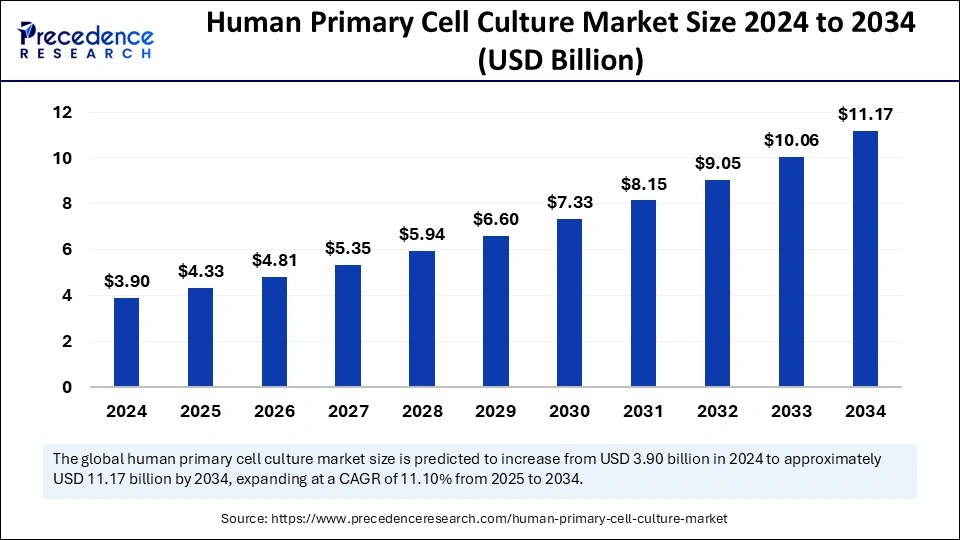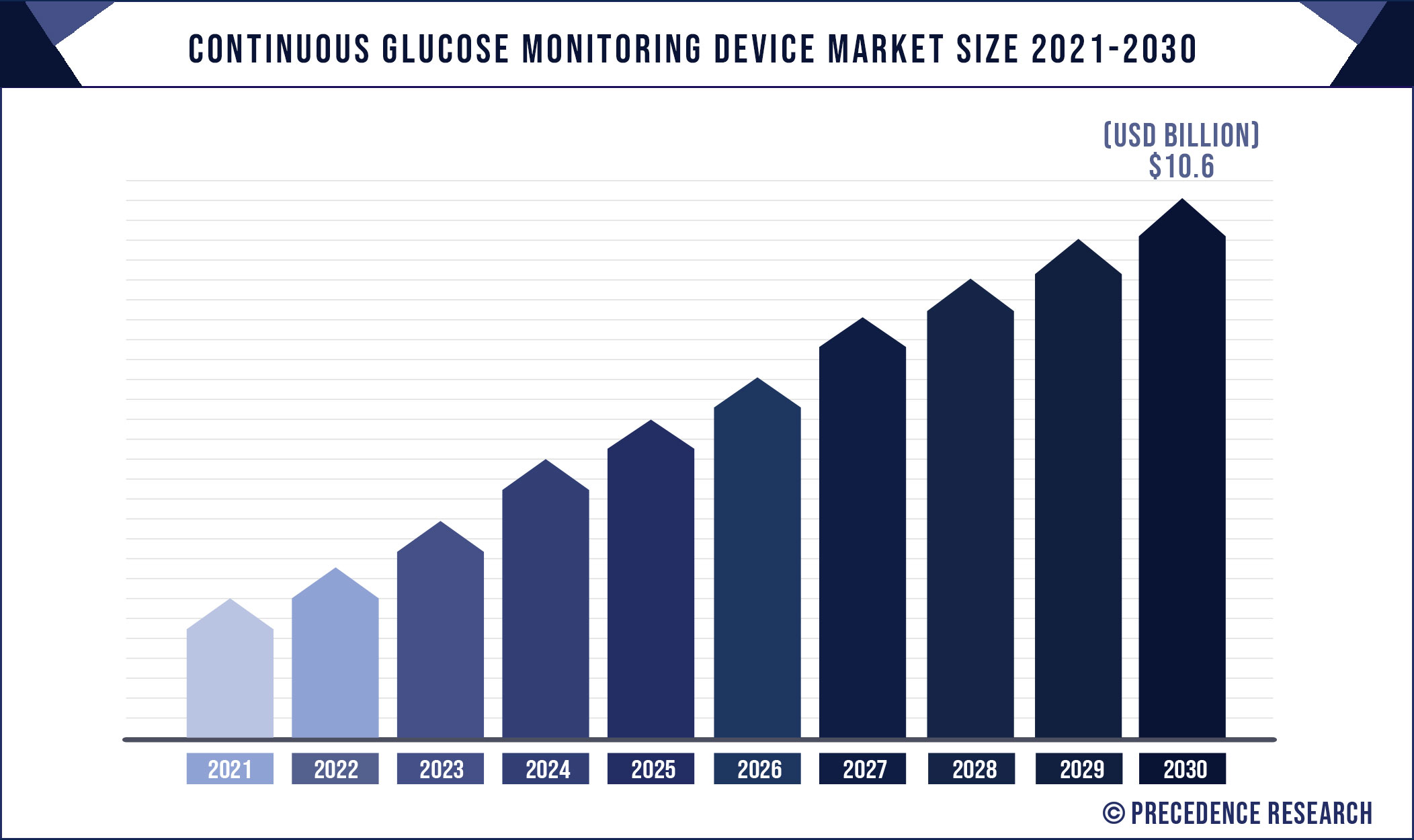The global human primary cell culture market was valued at approximately USD 3.90 billion in 2024 and is projected to reach around USD 11.17 billion by 2034, expanding at a CAGR of 11.10% from 2025 to 2034.
Human Primary Cell Culture Market Key Takeaways
- North America dominated the global market with the largest share of 41% in 2024.
- Asia Pacific is estimated to expand at the fastest CAGR of 12.3% market between 2025 and 2034.
- Europe is predicted to witness notable CAGR of 11.04% over the forecast period.
- By product type, the primary cells segment held the largest market share in 2024.
- By product type, the instruments segment is anticipated to grow at a remarkable CAGR between 2025 and 2034.
- By cell type, the human primary cells segment captured the largest market share in 2024.
- By cell type, the animal primary cells segment is expected to expand at a notable CAGR over the projected period.
- By application, the cell & gene therapy development segment accounted for the largest market share in 2024.
- By application, drug discovery and development segment is anticipated to witness fastest growth over the forecast period
- By end user, the pharmaceutical and biotechnology companies segment held the biggest market share of 49% in 2024.
The human primary cell culture market is witnessing significant growth, driven by the increasing adoption of primary cell cultures in drug discovery, regenerative medicine, and biotechnology research. Human primary cells, derived directly from tissues, retain the original physiological characteristics of the donor, making them invaluable in biomedical research.
Compared to immortalized cell lines, primary cells offer a more accurate representation of in vivo conditions, leading to more reliable experimental outcomes. The growing need for personalized medicine and advancements in cell-based therapies have further propelled the demand for high-quality primary cell cultures. Researchers and pharmaceutical companies are leveraging these cells for applications ranging from cancer research to immunotherapy development. Additionally, technological advancements in cell culture techniques, such as 3D culture models and co-culture systems, are enhancing the efficiency and applicability of primary cell cultures.
However, factors such as the high cost of cell culture media, ethical concerns related to human tissue procurement, and the inherent limitations in the lifespan of primary cells pose challenges to the market. Despite these challenges, the market is expected to experience robust growth due to the continuous expansion of research in precision medicine and stem cell therapy.
Sample Link: https://www.precedenceresearch.com/sample/5687
Key Drivers
Several key factors are driving the expansion of the human primary cell culture market. The growing emphasis on precision medicine and personalized treatment approaches has significantly increased the demand for human-derived primary cells. Pharmaceutical and biotechnology companies are actively utilizing primary cells in preclinical drug testing to enhance the predictive accuracy of clinical outcomes.
The rise in chronic diseases, such as cancer, cardiovascular disorders, and neurodegenerative conditions, has necessitated more advanced and reliable research models, further boosting market growth. Government initiatives and funding programs supporting cell-based research are also playing a pivotal role in market expansion. Additionally, the increasing adoption of 3D cell culture technologies is transforming the landscape, allowing researchers to create more physiologically relevant models for drug screening and disease modeling.
The growing interest in stem cell research and regenerative medicine, particularly in tissue engineering and cell-based therapies, is another significant driver. Furthermore, advancements in bioprocessing technologies have improved the scalability and reproducibility of human primary cell cultures, making them more accessible to a broader range of researchers and industries.
Opportunities
The human primary cell culture market presents numerous opportunities for growth and innovation. The rising trend of organ-on-a-chip and microfluidic systems offers a promising avenue for integrating human primary cells into high-throughput screening platforms. This approach has the potential to revolutionize drug development by providing more precise models for testing drug toxicity and efficacy.
Additionally, the increasing collaborations between academic institutions, research organizations, and biotechnology companies are fostering the development of novel primary cell culture techniques. Emerging markets in Asia-Pacific, Latin America, and the Middle East are offering lucrative opportunities for market expansion due to increased investments in biomedical research and healthcare infrastructure.
The growing focus on cell and gene therapies also presents a promising avenue for human primary cell culture applications, particularly in the development of autologous and allogeneic cell-based therapies. Furthermore, the integration of artificial intelligence and machine learning in cell culture analysis is expected to enhance the efficiency of cell-based assays, driving innovation in the field. As ethical concerns surrounding animal testing grow, human primary cell cultures are becoming a preferred alternative, creating additional market opportunities.
Challenges
Despite the positive outlook, the human primary cell culture market faces several challenges. The limited lifespan of primary cells remains a major drawback, as it restricts their usability for long-term studies and large-scale applications. Additionally, the complexity of isolating and maintaining primary cells under controlled conditions poses technical difficulties, often requiring specialized expertise and advanced laboratory infrastructure.
The high cost associated with primary cell culture media, reagents, and consumables is another challenge, particularly for smaller research institutions with limited budgets. Ethical concerns surrounding the sourcing of human tissues and the need for stringent regulatory approvals further complicate market growth. Variability in primary cell behavior due to donor-specific differences can also impact the reproducibility of experimental results, posing challenges for standardization.
Furthermore, competition from alternative cell culture models, such as induced pluripotent stem cells (iPSCs) and immortalized cell lines, may hinder the widespread adoption of human primary cells. Addressing these challenges will require continued investment in technological advancements, improved cell culture protocols, and the development of cost-effective solutions for large-scale applications.
Regional Insights
The human primary cell culture market exhibits strong regional variations, with North America leading due to the presence of well-established biotechnology and pharmaceutical industries. The United States, in particular, accounts for a significant share of the market, driven by extensive research initiatives, funding support, and collaborations between academic institutions and biotech firms.
Europe follows closely, with increasing investments in regenerative medicine, cancer research, and stem cell therapies. Countries such as Germany, the UK, and France are at the forefront of cell-based research, fostering market growth.
The Asia-Pacific region is emerging as a major growth hub, fueled by rising government support for biomedical research, expanding pharmaceutical manufacturing capabilities, and increasing investments in life sciences. China, Japan, and India are witnessing rapid advancements in cell culture technologies, contributing to the overall market expansion.
Latin America and the Middle East & Africa are gradually gaining traction, with growing awareness of cell-based therapies and increasing investments in healthcare infrastructure. The regional dynamics of the market are expected to continue evolving as emerging economies strengthen their biomedical research capabilities.
Don’t Miss Out: Laboratory Equipment Market
Market Key Players
- ATCC (American Type Culture Collection)
- BD (Becton, Dickinson, and Company)
- Cell Biologics
- Corning Incorporated
- Danaher Corporation
- Fujifilm Irvine Scientific
- GE Healthcare
- InVivo Biosystems
Recent News
The human primary cell culture market has witnessed several key developments in recent years. Advances in 3D cell culture technologies have enabled researchers to create more physiologically relevant models for drug discovery and disease modeling. Several biotechnology firms have launched innovative primary cell culture kits and reagents, enhancing the ease of use and accessibility of human primary cells for researchers.
In addition, collaborations between pharmaceutical companies and academic institutions have accelerated research in cell-based therapies, particularly in oncology and regenerative medicine. Regulatory agencies are also updating guidelines for the ethical procurement and use of human primary cells, ensuring compliance with international standards.
The rise of bioprinting technologies has further expanded the potential applications of human primary cell cultures in tissue engineering and organ regeneration. Moreover, the COVID-19 pandemic has underscored the importance of human primary cells in virology research, leading to increased investments in infectious disease research. As the industry continues to evolve, technological innovations, regulatory advancements, and strategic partnerships are expected to drive further growth in the market.
Market Segmentation
By Product Type
- Primary Cells
- Reagents and Supplements
- Instruments
- Primary Cell Culture Media
- Other Consumables
By Cell Type
- Human Primary Cells
- Animal Primary Cells
By Application
- Cell & Gene Therapy Development
- Drug Discovery and Development
- Vaccine Production
- Cancer Research
- Prenatal Diagnosis
- Others
By End User
- Pharmaceutical and Biotechnology Companies
- Contract Research Organizations (CROs)
- Academic and Research Institutions
By Region
- North America
- Europe
- Asia Pacific
- Latin America
- Middle East and Africa



